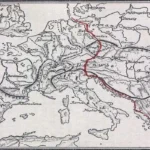World War II, a global conflict that reshaped the course of the 20th century, was marked by numerous pivotal moments that significantly influenced its outcome. These turning points, ranging from monumental battles to strategic decisions, not only altered the direction of the war but also had lasting impacts on international relations and the post-war world. As we explore the top 10 turning points of World War II, we gain insights into the complex dynamics of this far-reaching conflict and the critical decisions and events that led to the eventual defeat of the Axis powers and the establishment of a new world order.
10- Operation Barbarossa
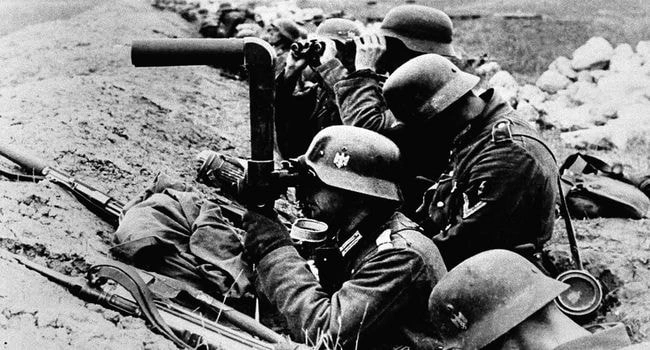
Photo Credit: Rare Historical Photos
Operation Barbarossa, launched on June 22, 1941, was Nazi Germany’s massive invasion of the Soviet Union and marked a critical turning point in World War II. This operation, named after Emperor Frederick Barbarossa, was the largest military invasion in history in both manpower and casualties. The invasion broke the non-aggression pact between Nazi Germany and the Soviet Union, catching the Soviets off guard and leading to substantial territorial gains for the Germans. However, the harsh Russian winter, coupled with fierce Soviet resistance, notably at key cities like Moscow and Leningrad, halted the German advance.
The failure of Operation Barbarossa forced Germany into a prolonged and grueling war on the Eastern Front, significantly draining its resources and military strength. This operation shifted the balance of the war, galvanizing the Soviet Union into a formidable resistance force that would eventually drive back the German army all the way to Berlin. The failure of Operation Barbarossa exposed the vulnerabilities of the Nazi war machine and was a turning point that ultimately led to the downfall of Nazi Germany. It also had a profound impact on the Soviet Union, leading to immense suffering but also fostering a sense of unity and resilience that would be pivotal in defeating the Axis powers.
9- Battle of El Alamein
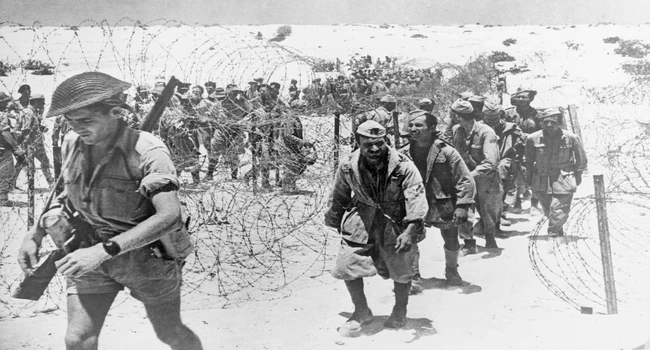
Photo Credit: Britannica
The Battle of El Alamein, fought in late 1942, was a significant Allied victory in the North African campaign and a turning point in World War II. This battle marked the halt of the Axis advance towards Egypt and the Suez Canal, a vital strategic point for controlling Middle Eastern oil supplies and maintaining communication lines with British colonies in Asia. The battle was primarily between the British Eighth Army, led by General Bernard Montgomery, and the German-Italian Panzer Army, commanded by Field Marshal Erwin Rommel, known as the “Desert Fox.” The Allied victory at El Alamein was a result of several factors, including improved tactics, better use of intelligence, and the effective deployment of newly arrived reinforcements and supplies.
This victory was a significant morale booster for the Allies and marked the beginning of a major offensive that would eventually push the Axis powers out of Africa. The Battle of El Alamein is often cited as an example of effective military leadership and the importance of combined arms tactics in modern warfare. It demonstrated the strategic importance of North Africa in the broader context of the war and marked the turning point after which the Allies maintained a strategic and psychological advantage over the Axis powers in the region.
8- Siege of Leningrad
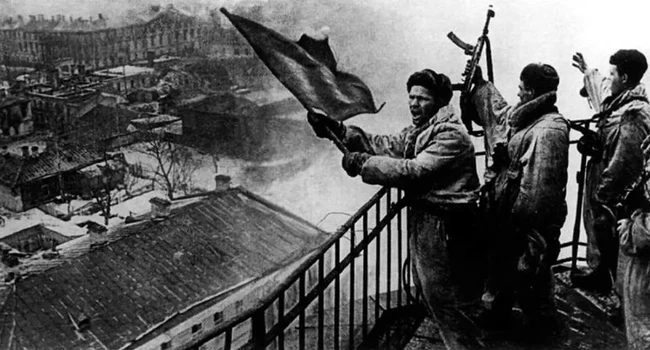
Photo Credit: Panchayiti
The Siege of Leningrad, lasting from September 1941 to January 1944, was one of the longest, most destructive, and most lethal sieges in history. It was a significant turning point in World War II, epitomizing the brutality and endurance of the Eastern Front. The German and Finnish forces surrounded Leningrad (now Saint Petersburg) in an attempt to force the Soviet Union into surrender through starvation and bombardment. Despite the blockade, the city’s defenders and civilians showed extraordinary resilience. The siege resulted in extreme hardship for the city’s residents, with severe food shortages leading to widespread famine and death.
The Soviet Union, however, managed to keep a slender lifeline open across Lake Ladoga, known as the “Road of Life,” which was crucial for the city’s survival. The successful defense of Leningrad played a crucial role in maintaining Soviet morale and resistance against the German invasion. The eventual lifting of the siege in 1944 marked a significant strategic victory for the Soviet Union and a turning point on the Eastern Front. The resilience of Leningrad’s defenders and the city’s survival against all odds had a profound impact on the Soviet war effort and contributed to the eventual defeat of Nazi Germany. The siege exemplifies the human capacity for endurance in the face of unimaginable adversity and the devastating human cost of war.
7- Battle of Midway

Photo Credit: History
The Battle of Midway, fought between June 4 and 7, 1942, was a decisive naval battle in the Pacific Theater of World War II and a turning point in the war against Japan. Occurring just six months after Japan’s attack on Pearl Harbor, Midway was a critical moment where the balance of power in the Pacific shifted in favor of the United States. The U.S. Navy, benefiting from superior intelligence that had broken Japanese communication codes, was able to anticipate and effectively counter the Japanese attack. The battle resulted in the sinking of four Japanese aircraft carriers, a loss from which the Japanese Navy never fully recovered.
This victory halted Japanese expansion in the Pacific and marked the beginning of a series of U.S. offensive operations that would eventually lead to Japan’s defeat. The Battle of Midway is celebrated as a key moment when the tide of war in the Pacific turned in favor of the United States and its Allies. It demonstrated the critical importance of intelligence, technology, and innovative tactics in modern naval warfare and marked a shift in naval power from battleships to aircraft carriers, which would dominate naval strategy for the remainder of the war.
6- Attack on Pearl Harbor
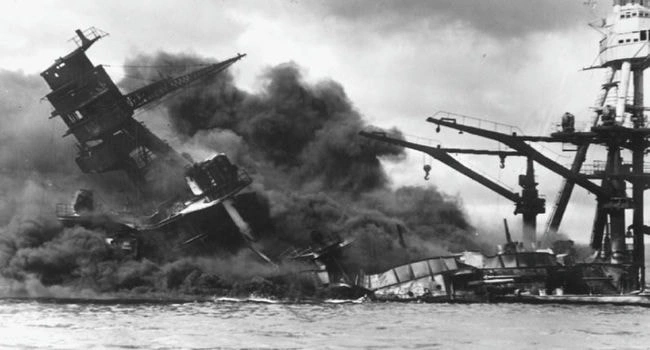
Photo Credit: Bay News 9
The Attack on Pearl Harbor on December 7, 1941, was a defining moment in World War II, dramatically altering the course of the war and the history of the 20th century. This surprise military strike by the Imperial Japanese Navy Air Service against the United States naval base at Pearl Harbor in Hawaii led to significant American losses and was the catalyst for the United States’ entry into World War II. The attack marked a shift in the war’s dynamics, as the United States, which had previously adopted an isolationist stance, declared war on Japan the following day, with Germany and Italy subsequently declaring war on the United States.
The entry of the United States into World War II brought substantial military and economic resources to the Allied side, significantly impacting the war’s course. The attack on Pearl Harbor not only galvanized American public opinion in favor of the war but also marked the end of American isolationism, reshaping the United States’ role in world affairs. The event stands as a pivotal moment in history, altering the trajectory of the war and setting the stage for the eventual defeat of the Axis powers. The legacy of Pearl Harbor continues to influence American military and foreign policy, serving as a reminder of the impact of unanticipated events in shaping global history.
5- Battle of Stalingrad
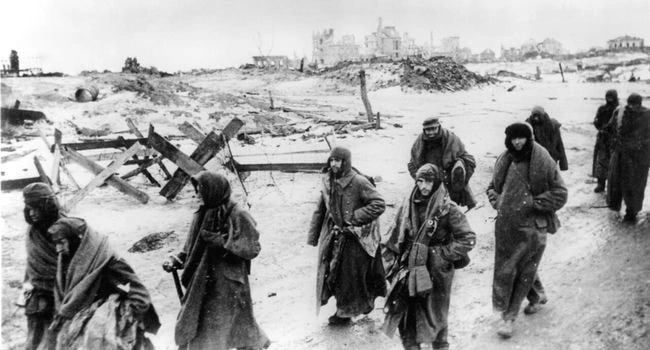
Photo Credit: France 24
The Battle of Stalingrad, from August 1942 to February 1943, was one of the deadliest and most brutal battles in World War II and a significant turning point on the Eastern Front. The battle was fought between the Axis powers, led by Nazi Germany, and the Soviet Union for control of the city of Stalingrad (now Volgograd) in Southern Russia. The battle was marked by fierce close-quarters combat and complete disregard for military and civilian casualties. Stalingrad became a symbol of Soviet resistance and the determination to defend the motherland at all costs. The Soviet victory at Stalingrad was a major turning point in the war.
It halted the German advance into the Soviet Union and marked the beginning of a major Soviet offensive that would eventually lead to the fall of Berlin and the defeat of Nazi Germany. The battle had significant strategic implications, as it depleted German forces and shattered the myth of their invincibility. The loss at Stalingrad was a severe blow to German morale and Hitler’s prestige, leading to a shift in the balance of power on the Eastern Front in favor of the Allies. The victory at Stalingrad was not just a military triumph for the Soviet Union but also a symbol of resilience and sacrifice, playing a crucial role in the eventual defeat of Nazi Germany. The battle is remembered for its unprecedented ferocity, the heavy human cost, and its role in turning the tide of the war in favor of the Allies.
4- Invasion of Normandy
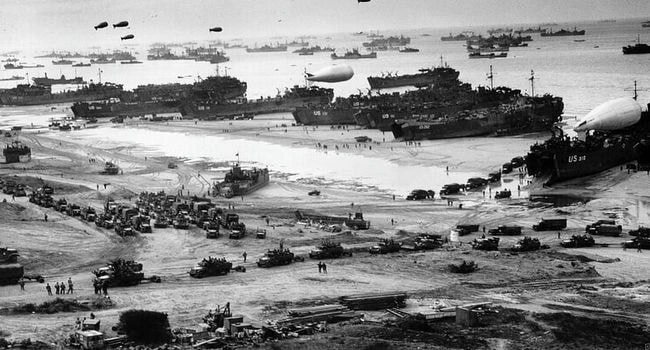
The Invasion of Normandy, commonly known as D-Day, on June 6, 1944, was a pivotal moment in World War II and one of the largest amphibious military assaults in history. This massive operation involved over 156,000 American, British, and Canadian forces landing on five beaches along the coast of Normandy, France. The success of D-Day was a culmination of meticulous planning, extensive training, and the use of innovative technology and tactics. It also involved significant deception strategies to mislead the Germans about the invasion’s location and timing. The invasion established a crucial second front against the Nazis and marked the beginning of the liberation of Western Europe from Nazi occupation.
The success of D-Day significantly depleted German resources and morale and paved the way for the Allied advance towards Germany. The operation’s scale, complexity, and significance make it one of the most important military operations in history, symbolizing the beginning of the end for Nazi Germany. D-Day demonstrated the Allies’ ability to coordinate a large-scale invasion across different branches of the military and the importance of air superiority and logistical planning in modern warfare. The invasion also highlighted the bravery and sacrifice of the soldiers who fought to liberate Europe from Nazi tyranny, many of whom paid the ultimate price on the beaches of Normandy.
3- Battle of Britain
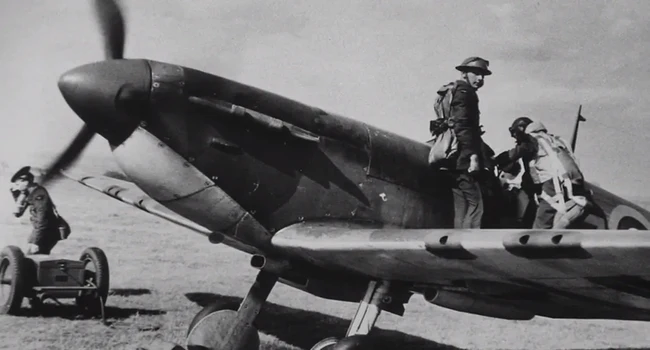
Photo Credit: Montgomery Advertiser
The Battle of Britain, fought in the skies over the United Kingdom in the summer and autumn of 1940, was a major turning point in World War II and the first major campaign to be fought entirely by air forces. This battle was between the British Royal Air Force (RAF) and the German Luftwaffe and was crucial in preventing a German invasion of Britain. The Luftwaffe aimed to gain air superiority over the RAF as a prelude to Operation Sea Lion, Hitler’s planned invasion of the British Isles. The battle was characterized by a series of aerial dogfights and bombing raids over Britain, including major cities like London. The resilience, courage, and determination of the RAF pilots, along with the effective use of radar technology and strategic command and control, played a crucial role in thwarting the German offensive.
The battle’s outcome was a significant victory for Britain and a major setback for Hitler, who had underestimated the strength and resolve of the RAF. The British victory in the Battle of Britain not only boosted Allied morale but also marked the first major defeat for Hitler’s military forces. It demonstrated that the German war machine was not invincible and set the stage for future Allied successes in the war. The Battle of Britain is remembered as a symbol of resistance against overwhelming odds and a testament to the effectiveness of air power in modern warfare. It also highlighted the importance of civilian support and the role of British society in rallying behind their defenders during a time of crisis.
2- Tehran Conference
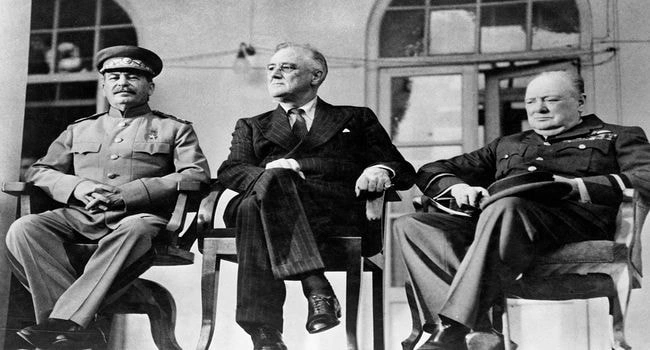
Photo Credit: Wikipedia
The Tehran Conference, held from November 28 to December 1, 1943, was the first meeting of the “Big Three” Allied leaders during World War II: Soviet Premier Joseph Stalin, U.S. President Franklin D. Roosevelt, and British Prime Minister Winston Churchill. This conference was a significant turning point in the war, as it marked the first time the leaders of the Soviet Union, the United States, and the United Kingdom met to discuss and coordinate their military strategies against the Axis powers and plan for the post-war world. One of the key outcomes of the Tehran Conference was the agreement to open a second front in Western Europe, which would later materialize as the D-Day invasion of Normandy. This decision was crucial in relieving pressure on the Soviet Union, which had been bearing the brunt of the war against Germany on the Eastern Front.
The conference also laid the groundwork for the United Nations’ formation and discussed post-war reorganization, particularly the fate of Germany and Eastern Europe. The Tehran Conference was significant in strengthening the cooperation and unity among the Allied powers, despite their differing ideologies and post-war aspirations. It demonstrated the importance of diplomatic unity and strategic planning in wartime and was a crucial step in coordinating the efforts of the Allied powers towards the final strategy against the Axis powers. The meeting underscored the complexities of wartime diplomacy and the challenges of balancing military objectives with political considerations. The Tehran Conference set the stage for the Yalta and Potsdam Conferences, where the Big Three would meet again to shape the post-war world order.
1- The Atomic Bombings
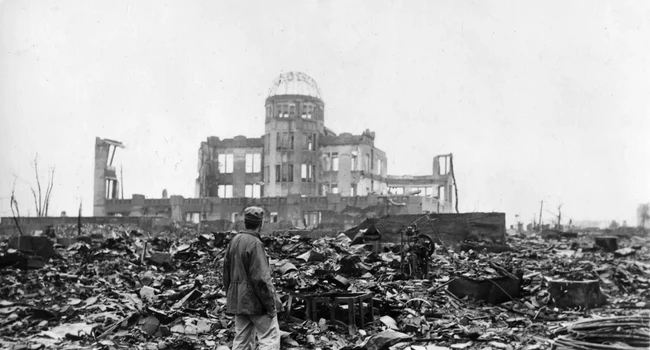
Photo Credit: The New Yorker
The atomic bombings of Hiroshima on August 6 and Nagasaki on August 9, 1945, were the final, dramatic turning points of World War II and events that changed the course of human history. These bombings by the United States were the first and only use of nuclear weapons in war and resulted in the immediate and devastating destruction of both cities, with immense loss of life and suffering. The decision to use atomic bombs, made by U.S. President Harry S. Truman, was aimed at bringing a swift end to the war with Japan and avoiding what was anticipated to be a costly invasion of the Japanese mainland. The bombings had a profound impact on Japan, leading to its unconditional surrender on August 15, 1945, effectively ending World War II.
The use of atomic weapons marked the beginning of the nuclear age, fundamentally changing the nature of warfare and international relations. The bombings raised ethical and moral questions about the use of nuclear weapons and the civilian cost of achieving military objectives. The legacy of Hiroshima and Nagasaki continues to influence debates on nuclear weapons, warfare, and international security. These events hastened the end of World War II but also ushered in a new era of geopolitical tension during the Cold War, as nations grappled with the power and implications of nuclear technology. The bombings of Hiroshima and Nagasaki are remembered as a somber reminder of the destructive power of nuclear weapons and the importance of pursuing peace and disarmament to prevent such a tragedy from occurring again.

